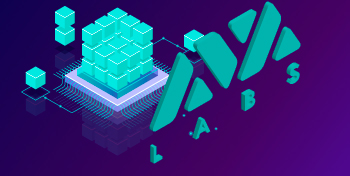For many, what Bitcoin used to promise, is now provided by DeFi. Decentralized finance has brought new opportunities to the world that were not even expected from the traditional financial system. In many areas, DeFi is out of competition, and in some cases, there is a fierce struggle.
Proposals by two financing systems
It is assumed that decentralized financial platforms represent an entire alternative financial system for offering and receiving loans, exchanging currencies, and making payments – the list goes on. No banks, brokers or trusted third parties are required. Just secure and transparent software.
One day, the promises will probably become reality, but that day will still come, since it is not today. What does decentralised funding promise, what does centralised funding deliver? Let’s take a closer look at the difference between CeFi and DeFi in cryptocurrency lending.
In short, DeFi is the best buzzword, and CeFi is the best product. Our team will try to help you navigate the world of crypto-lending protocols and provide you with performance indicators that you should pay attention to when choosing one of them. A little visualization of what’s going on.
- What’s What in Crypto Lending
Before we start talking about the pros and cons, let’s sort out the terminology, and classify the crypto-lending protocols.
At this point, the best structure for classification has been proposed by Kyle J. Smith. Kistner in his article “How decentralized is DeFi?” According to Kistner, we can divide all cryptocurrency lending projects into categories, starting with fully centralized (CeFi), and ending with fully decentralized DeFi of the sixth degree, which does not exist in nature. All decentralized projects are located between DeFi Degree 1 and 5.
The category in the structure is assigned based on the number of the following decentralized components:
- safety
- price channels
- initiating margin requirements
- ensuring the liquidity of the margin requirement
- determining the interest rate
- development of the protocol.
Take for example a platform that is a pure P2P platform with transactions made directly between the lender and the borrower. While the P2P platform is running, users freely agreed on interest rates. The decentralized determination of the interest rate has made it a Degree 1 DeFi platform.
Decentralization, even in small amounts, means restrictions for users, and the platform is gradually moving towards a more centralized business model. This shift allows for the development of better crypto lending tools for customers. Now that all these components are centralized, it’s pure CeFi.
- Functionality and limitations
It’s surprising how limited DeFi’s offerings are, given the drive to revolutionize banking and create more global, more flexible and transparent finance. The economy is shaky, the networks are too slow, and no one knows how to make the most of it.
Until recently, MakerDAO worked only with Ether as collateral, and the transition from a single system to a system with multiple collateral was marked as a big victory. But platforms running on the Ethereum blockchain still can’t list any coins other than ERC20 tokens, although there are some workarounds.
Let’s not even talk about the technical and legal inability of decentralized platforms to manage fiat assets. With money in DeFi, there’s not much you can do. You can’t pay your bills, you can’t pay your taxes, you can’t buy most of the real stuff. It’s like being the only person on planet Earth with dollars, while everyone else is exchanging shells and beads.
Thanks to CeFi, users can work with various coins and blockchains. You can get a loan secured by an anonymous asset, such as Monero. You can even use fiat assets as collateral to borrow some BTC or vice versa. A long list of available assets and their combinations is accompanied by a wide selection of fiat transaction methods. You can deposit and withdraw funds using bank cards, international bank payments, payment systems such as Advcash, etc.
- User Sign in
DeFi likes to brag about not being covered by banking services, and that they are available to everyone. Yes, their applications do not require verification or paperwork, but they do need additional effort on the part of the user. High barriers to entry arise from an unexpected direction.
CeFi offers user-friendly mobile apps with push notifications, two-factor authentication, customer support, and other useful features. Users don’t need to know what smart contracts are and how self-managed crypto wallets work.
Platform developers have witnessed in their writings how important fast and simple workflows are to scale a product to a wider audience. If you make users think about your product, process, or service, they will go further and not bother with you. The faster they can imagine success, the more likely they are to stay with you.
What else might surprise a newbie to DeFi is that the fees for ETH transactions are too high. Sharp fluctuations in profitability, depending on supply and demand, are also useless. At CeFi, you don’t pay any unexpected expenses. In fact, you do not pay any commission at all for withdrawing funds in coins and fiat.
- Not your keys – not your coins
One of the main arguments in favor of DeFi is the idea that platforms are incredibly secure: they are not centralized and do not need to rely on any separate third-party organization to work.
However, the technology you trust has been created (what a surprise!) by people. Due to human errors and smart contract errors, your coins may fall into the wrong hands, even if you keep the keys intact.
The visible reward offers hackers the extremely lucrative prospect of spending their time and resources searching for loopholes in smart contracts. Decentralized platforms have already lost a lot of money due to such loopholes. This month alone, projects on Binance were attacked three times, and suffered $210 million in damage. That’s the security.
- Sustainability and crisis management
Smart contracts, reliable in a calm environment, can not always cope with the chaos in the cryptocurrency market. Centralized platforms are faster and allow you to manage risks. This allows them to control the situation and avoid losses at critical moments.
Remember Black Thursday 2020, the worst cryptocurrency day in 7 years? Go to CoinMarketRate, and see the price history of that time period.
A huge amount of panic selling then overwhelmed the Ethereum network to a degree not seen in a year. The average cost of an ETH transaction has risen to $0.58, and confirmation takes up to 44 minutes. Many exchanges faced infrastructure problems during the price collapse.
When the market value of the collateral fell, users deposited more cryptocurrency on the platforms to avoid liquidation. The platform teams then had to work very hard to prevent the liquidation and failure of the platforms: they accelerated and accepted deposits manually until the network confirmed them during the “traffic jam”.
The centralized infrastructure coped with its task. The same cannot be said for the DeFi giant MakerDAO, which faced an emergency shutdown as its unsecured debt exceeded $4 million.
Last thoughts
In conclusion, let’s take another look at our comparison. Don’t you think the DeFi ecosystem needs time to catch up with its centralized counterparts in terms of security and usability? After all, the best option is to combine the best qualities of DeFi and the functionality of CeFi to get a unique financial lending tool.


